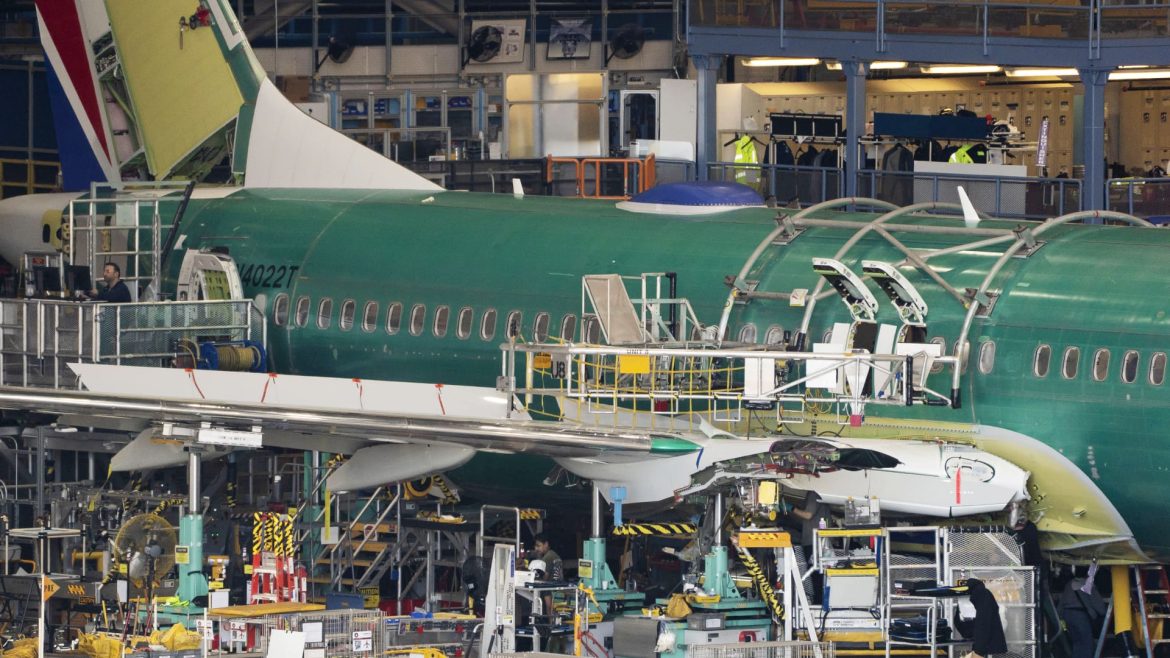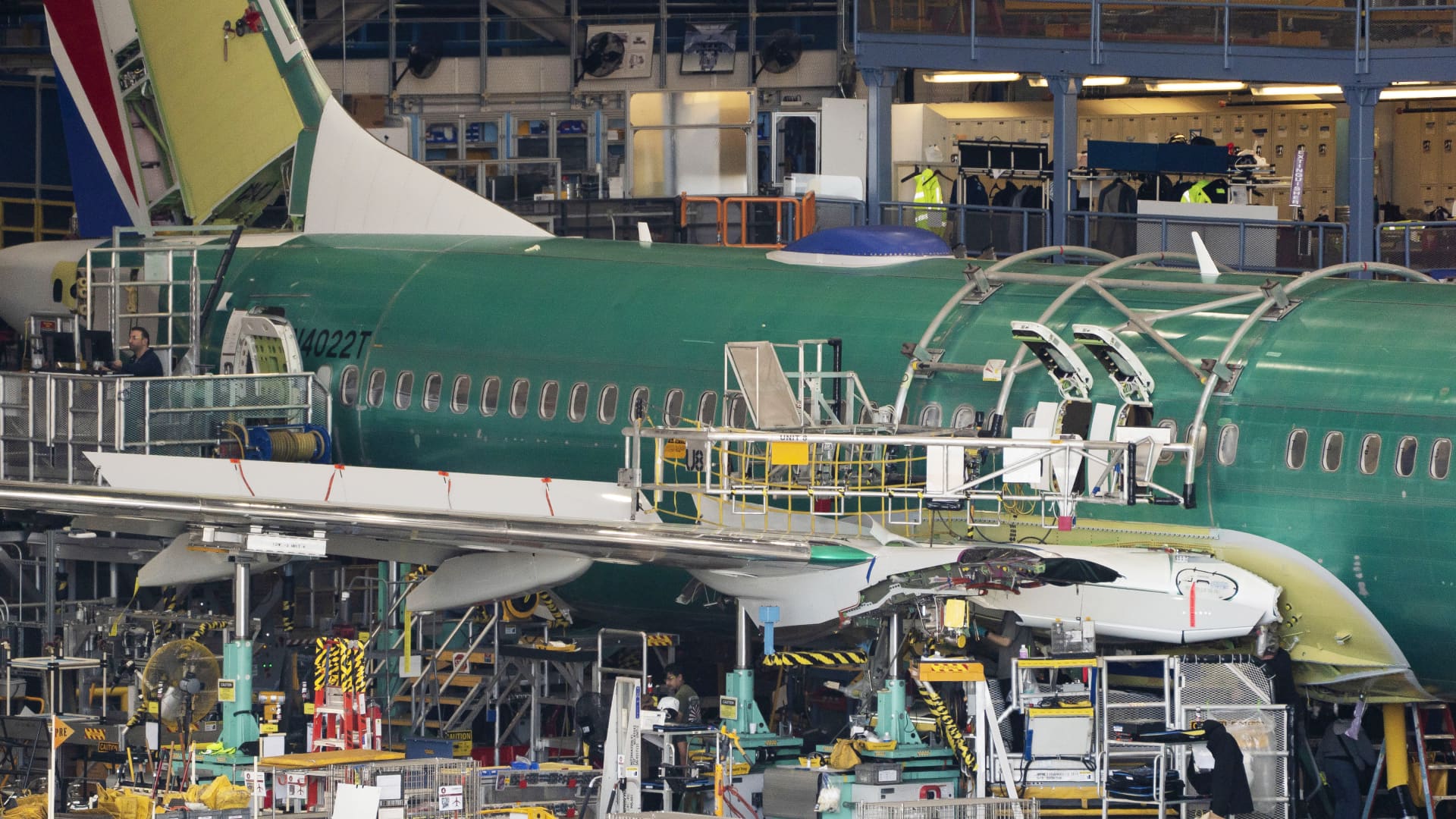Boeing and the China Trade War: A Turbulent Flight Path
The saga between Boeing and the Chinese aviation market over the past year paints a vivid picture of how geopolitics and trade tensions can directly impact global industry giants. As the United States and China engaged in a tit-for-tat trade war, Boeing, one of the world’s largest aircraft manufacturers, found itself navigating through a storm of halted deliveries, returned aircraft, and strategic recalibrations. This analysis examines the complex interplay of Boeing’s operations, delivery halts, production ramp-ups, and emerging resolutions within the context of fluctuating US-China relations as of mid-2025.
—
The Delivery Freeze: Boeing’s Aircraft Grounded in China
In the wake of escalating US tariffs on Chinese products, China responded by effectively freezing its acceptance of Boeing aircraft deliveries. This pause unfolded following orders from Chinese airlines to suspend not only Boeing jet deliveries but also purchases related to American aviation equipment. Multiple sources confirm early 2025 deliveries were halted abruptly, with at least three Boeing 737 MAX jets returned to the United States from China—an unusual and costly move underscoring the depth of trade tensions.
Such a freeze notably affected a crucial segment of Boeing’s commercial backlog. Around 10% of Boeing’s outstanding aircraft orders were earmarked for Chinese carriers, and about 50 planes were reportedly either undelivered or returned due to the trade restrictions. This disruption, while significant, did not initially cripple Boeing financially since the company planned to redirect some jets to other customers. Nonetheless, it cast a shadow over Boeing’s ability to capitalize on one of the world’s fastest-growing aviation markets.
—
Production Plans Amid Uncertainty
Despite the halt in deliveries, Boeing maintained a confident stance regarding production. CEO Kelly Ortberg provided updates during the company’s 1Q 2025 earnings call and other public statements, outlining aggressive plans to increase production of the ever-popular 737 MAX aircraft. Specifically, Boeing aimed to boost monthly production from the mid-30s to as many as 52 aircraft per month by early 2026.
This production ramp-up, reaching levels not seen since before the MAX’s earlier grounding related to safety issues, demonstrates Boeing’s intent to shore up inventory and meet resumed demand once trade conditions stabilize. However, CEOs and analysts acknowledge that obstacles remain in the form of supply chain pressures and ongoing tariff uncertainties, which could delay or dampen Boeing’s projected growth.
—
Signs of Thaw: Resuming Deliveries and Diplomatic Gains
By mid-2025, signs emerged that the stalemate was beginning to melt. China officially lifted its month-long ban on Boeing deliveries following a temporary reduction in tariffs agreed upon during renewed US-China trade talks. The resumption of deliveries was notable for both the 737 MAX and the 787 Dreamliner models, reflecting a broader reopening of the Chinese aviation market to Boeing’s products.
CEO Ortberg noted deliveries would recommence imminently, describing the restart as a “much-needed boost” for Boeing’s strained finances. The company reported a spike in deliveries in Q1 2025 compared to previous years, driven partly by these easing restrictions.
Moreover, Boeing appeared to be taking a strategic approach to its Chinese backlog, exploring options to resell planes originally destined for China but held back or returned during the freeze. While this secondary marketing effort aims to limit financial impacts, the Chinese market remains an important priority, with Boeing seeking to maintain strong customer relationships.
—
Broader Implications: Trade War Impact on Aviation Growth
The Boeing-China episode signals broader challenges for the aviation industry caught between geopolitics and expanding market demand. Chinese airlines, driven by the country’s reopening after COVID-19 lockdowns and a resurgence in air travel, require reliable supplies of jets like the 737 MAX for fleet expansion. The sudden trade-induced interruptions threatened to slow growth trajectories and introduce delays that ripple through supply chains and manufacturing schedules.
Despite this, analysts predict that while tariff-induced delays and production complications may moderate growth, the fundamental demand for aircraft in China remains robust over the medium term. Boeing’s efforts to ramp up production and secure delivery permissions anticipate a rebound, although the tightrope walk of trade diplomacy means future tensions could flare anew.
—
Boeing’s Strategic Response and Outlook
Facing these challenges, Boeing’s leadership emphasized cautious optimism. CEO Ortberg underscored the company’s commitment to “getting it right” rather than rushing production at the expense of quality. Asset sales to reduce Boeing’s debt and streamline operations are underway, aiming to enhance financial flexibility amidst uncertainty.
The strategic ramp-up of production, combined with the resumption of deliveries to key markets like China, positions Boeing to capitalize as trade tensions subside. However, Boeing’s remarks also highlight a willingness to push back against unfavorable trade decisions, with past threats to cease building planes for the Chinese market illustrating the high stakes involved.
Boeing’s ability to navigate a volatile geopolitical landscape while maintaining its engineering and manufacturing discipline will likely shape the company’s trajectory for years. The company’s turnaround plans, including potential future aircraft launches and investments in space-related ventures discussed by senior executives, signal an ambition to remain a dominant global aerospace player beyond current challenges.
—
Conclusion: Navigating Through Skies of Uncertainty
The Boeing-China delivery saga encapsulates the fragility of global supply chains amid geopolitical strife and economic rivalry. It vividly demonstrates how trade policies can directly affect corporate operations, market access, and long-term strategic planning. Boeing, confronted with halted deliveries and returned aircraft, responded with resilience through production acceleration, strategic sales, and diplomatic engagement.
As of mid-2025, improved trade relations have thawed restrictions and allowed Boeing to resume vital deliveries to China, a move critical for both parties’ commercial aviation ambitions. Yet, the episode leaves clear lessons on the need for adaptability, risk management, and cautious optimism in the face of international trade volatility.
While the skies ahead for Boeing are clearing, the journey underscores the intertwining of business and geopolitics in the global aerospace industry. Boeing’s unfolding strategy reflects not just the challenge of building jets but also the art of navigating uncertainty in a constantly shifting geopolitical airspace.





